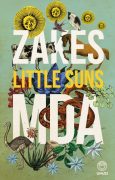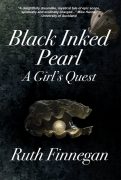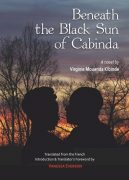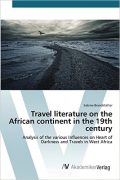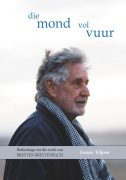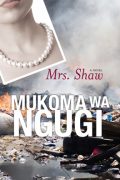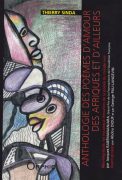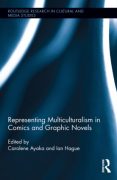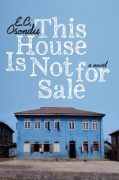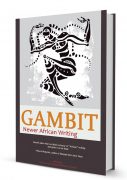Truth, lies, betrayal and (lost) loyalties in Mukoma wa Ngugi’s ‘Mrs. Shaw’
The Story
Kalumba flees his home country, the fictional Kwatee Republic, and as an exile more or less builds up a new life in America. However, the story of an elderly British lady, Mrs. Shaw, confronts him hard with his own and his home country’s history. It triggers him to return home and to help his comrades with building up the country. In the meantime he wants to come to terms with history and more specifically with his country’s past. But in history the truth is often disguised, or buried, especially in the history of Kwatee Republic. Priest Baba Ogum, an important character in the book, warns his people:
The Bible says – your dead will live; their corpses will rise. You who lie in the dust, awake and shout for joy. For your dew is as the dew of the dawn, and the earth will give birth to the departed spirits. I am here to tell you this: that which has lived cannot truly die. Who we are, even though buried deep down in the earth, will become light. Earthquakes break the caskets in which we bury the truth; floods wash the buried truth clean. The earth will give birth to what you bury. (p. 40)
These are prophetic words of Ogum’s father, who uses them in one of his sermons. From experience of life he knows that the truth or lies are always used at random, to the leaders’ benefits, be they the ones in power or the leaders of the liberation movement.
Ironically enough, Baba Ogum also predicts the mystification around his own death. He is killed in a massacre, together with several freedom fighters and other victims of the dictatorial regime that rules Kwatee Republic. But this massacre is hushed up, by the regime and the liberation movement alike.
History and interpretation
Kalumba , a freedom fighter like his friend Ogum, is the only witness of the massacre. With the help of Ogum and his lover Sukena, Kalumba flees the country as he is, like Baba Ogum, also on the list of people targeted to be eliminated by the regime. As an exile in America Kalumba shoves away the truth about the massacre for ten years.
But also Ogum and Sukena, loyal as they are to the liberation movement, have to keep quiet about the massacre. So, loyalty to the movement is for them more important than the truth about Ogum’s father’s and others’ death. Truth, lies, betrayal and (lost) loyalties are recurring themes in the book and in the history of the fictional Kwatee Republic.
For example, in the nineteenth century, the British armed the Masasi – clearly an allusion to the Masai people of Kenya and Tanzania – in the assumption that they would take up these weapons against neighbouring tribes that also the British wanted to defeat. But instead, the Masasi used these weapons against the British. So, the British felt deceived by the Masasi people and as a result unleashed a real war on them, which of course made the Masasi fight back even more intensely. It meant a decisive start in the liberation struggle, a point of no return to independence.
Later on in colonial history the British held the Kwatee liberation movement responsible for the disappearance of the National Security Officer in Eastern Africa, Mr. Shaw. Although the British were not sure about this themselves, it gave them the perfect excuse to intensify their struggle against the liberation movement. Of course, this again enhanced the bravery and fighting spirit of the freedom fighters, thus initiating the end of British rule and the beginning of the ‘First Independence’ of Kwatee Republic, as it is called in the book. The alleged historical episode whereby Mr. Shaw was captivated by the liberation movement, and had his head chopped off, has become part of Kwatean history. Later in the novel it turns out that this story was not true. And so it was a myth; a myth that determined Kwatee’s history.
During the first independence period, the same leaders that fought for the freedom of the country gradually become real dictators themselves, thus deceiving the people who fought at their side or otherwise supported them during the colonial period. Innocent people disappear at random, are imprisoned or are killed for no particular reason. Of course, for the rulers, the truth is of no use; lies and betrayal rule the country. It is in this period that the massacre on Baba Ogum and members of the (second) liberation movement takes place. But, contrary to what you would expect, the movement doesn’t want to reveal the truth about the massacre, so as to use it to their benefit. Instead they compromise themselves by striking a deal with the dictatorial regime to hide the truth, in exchange for some political favours. Thus in turn, by burying the truth, the movement deceives the people, even it’s own comrades like Ogum and Kalumba: Ogum can’t even tell the truth to his mother about his father’s death. And Kalumba, being a witness of the massacre in which Baba Ogum is killed, can’t reveal the terrible truth and has to live with it most of his life.
So, The Kwatean history recalled in the novel seems to underpin the idea that the course of history is determined by betrayal, myths and lies, rather than by chronological events, political moves and developments. For the course of history fiction seems to be more important than faction, the novel seems to say.
Personal relations
Also on the personal level the undertone in the novel is not an optimistic one: friendship, love and loyalties don’t last very long: Kalumba and Ogum are friends since childhood and comrades in the liberation movement but the history of their country and the death of Ogum’s father make them drift apart, not least of all because truth has a different meaning for them:
The truth could exist for its own sake; it had to serve a purpose in order to become life. This Ogum believed fervently. In the same way that Kalumba believed even without knowing it that the truth was inviolable, truth at all costs, Ogum believed that a truth can be compromised if it brings a better tomorrow. And so, for many reasons over which together they had no control, they were heading for disaster. When they recognized their brotherhood, history pulled them apart. (p. 214)
After fleeing Kwatee Republic in the early 1990s, Kalumba lives in exile in America. Like many an exile or a foreigner in the Western world, his start is very difficult: he is lonely and earns a living by doing all sorts of menial jobs. His life takes a turn for the better as he takes up a PhD project at university but particularly after he meets Mrs. Shaw, in a bar he regularly frequents to drink away his loneliness. Mrs. Shaw is an elderly lady who gradually reveals her own peculiar history, a history that turns out to be also part of Kalumba’s history. More so, Mrs. Shaw’s stories confuse him and confront him with his personal history, with his former love for Sukena – now Ogum’s lover – his brotherhood with Ogum and particularly with the massacre he witnessed. And so, at the moment when the second liberation movement is about to win the elections, in 2002, Kalumba returns home to support his country:
Five hundred years of unbroken domination starting with slavery to our present-day Dictator is finally about to be broken. And I want to be in that new nation. I deserve to be there because I am a survivor of its second war for independence. (…) I want to be part of my nation’s new education initiative. I will teach literature and history at Kwatee National University. (p. 75)
But, as soon as he is back, it becomes clear that Kalumba wants to teach the people the true history of his country and that he is not going to keep quiet about the massacre of a decade ago.. This is welcomed by the masses, who come to realize that they were all those years deceived, by the dictatorial rulers and by the liberation movement alike. But of course, this ‘spreading of the light’, as Baba Ogum did in his sermons, is not welcomed by those who ‘buried the truth’ all those years.
And as Ogum also buried the truth about his father’s death, his relation with Kalumba – already gradually changed over the years – takes a dramatic turn of events. Also Kalumba’s relation with Sukena has changed, resulting in ambiguous feelings when they meet again for the first time after his return. On the one hand there’s still a lot of affection, but on the other hand this is overruled by different loyalities: on the part of Kalumba by his love for Melissa, a Puertorican refugee with whom he developed a relationship, and by his loyalty to the truth; in the case of Sukena by her loyalty to Ogum and to the liberation movement, for which the truth can’t be revealed.
Pessimistic view
So, both on a historical and on a personal level, the novel seems to underpin the idea that the course of history and relations among people are determined rather by emotions based on fictions than on facts. And emotions can lead to love, affection and loyalty, but more often than not to loss, lies, betrayal and lost loyalties. Kalumba puts it as follows:
Yes, I very well understood this trail of broken treaties. I had been walking it since I was born. In fact, I had walked it right into exile. Unlike my father, I have never doubted what I know to be true – that the same hands that embrace one’s child will squeeze the life out of a neighbor’s child when war comes, that the same colonizer who built a church to save the native did not hesitate to burn it down when it housed rebels, and that my country’s leaders, black like me, speaking my language in tongues and praying to the same god, had sanctioned my torture by night and driven their children to school in the morning. (p. 57)
And a bit further Kalumba’s father says:
“Movements were formed and banned, leaders jailed, killed or exiled, and whole villages op people put in concentration camps. (…) Pretty much the same as it is now for your generation. Only your leaders are black’’, he would say. The ebb and flow of resistance and repression continued until… (p. 57)
The novel is abundant with these kinds of phrases. Therefore one could argue that ‘Mrs. Shaw’ has a pessimistic undertone: it hints at the cyclic course of (post)colonial history, in which one puppet regime follows upon another, and where massacres and other human disasters will happen over and over again.
Conclusion
This ‘historiographic lesson’ is worked out very well, in a superb way: mind gripping like a crime thriller; elucidating like a historical novel and ironical like a satire at it’s best. The writing style reminds you sometimes of the best of Ngugi wa Thiong’o – the author’s father – and of Meja Mwangi, not coincidentally two Kenyan writers.
One could read the novel also as a big assault on the dictators, the ruling class, the bourgeoisie and their Western allies in African countries, as in the best tradition of Ngugi’s novels and essays. In that respect, the following phrases, in which Ogum describes his and Kalumba’s old neighbourhood, could have been written by Mukoma wa Ngugi’s father:
Ogum walked by Memorial Primary School, the best in the area, which catered to the local elite. (…) Past the golf club was On Time Police Station, as it was derisively called by the poor. For the local elites, however, the police were on time whenever they dialed 999. (…) He turned left, passed the rich shopping center, and found himself in front of Our Lady of Mercy Primary School. It was a run-down school filled with run-down children belonging to parents who worked in the tea plantations. (…) The walk from his house to Kalumba’s was like watching history, the past and present etched into the landscape, scarred like the people who made a life off it. It was a huge photo album that recorded the people’s tragedies and triumphs, deaths and rebirths. (…). A few hundred feet from the bus stop was Our Lady of Mercy Hospital. Like its namesake, it catered to the poor. The wealthy went to personal physicians and, when terribly sick, went to hospitals in Europe or South Africa. For the elites, the whole of Kwatee was a business transaction, a place to be farmed and mined, and they participated in nothing outside of golf and nightclubs and other monuments to their opulence. (p. 23-25)
And, when Mukoma wa Ngugi desbribes the plight of the workers in town, it’s as though you are reading Going Down River Road of Mweja Mwangi, who like no one else before majestically fictionalized town life in Nairobi. The power of Mukoma wa Ngugi’s language is immense, for example as he describes – in a few sober strokes like in Edward Hopper’s Nighthawks – Kalumba’s loneliness while sitting in a bar on New Year’s Eve:
I take a long drink, and lugging my remaining beer, I skip the three or four barstools between us to sit next to the old white woman. Early into New Year’s Day, we are the only patrons in the bar – everyone else has a home to go to. This is an exceptionally bad time to be alone. We do not speak for a while. The bartender and owner of Eagle’s Bar looks over to see if we need drinks and then turns his attention to the muted TV tuned to some New Year’s celebration in New York.(p. 54)
Mrs. Shaw is a novel about truth, lies and betrayal in (post)colonial African history. It is also a study in exile, love, loss and (lost) loyalties. It is written in a style that weaves together the best traditions of East African writing seen so far.
Mrs. Shaw. A Novel – Mukoma wa Ngugi, 2015, Ohio University Press, ISBN:978-0-8214-2143-7 (hardback), 978-0-8214-4515-0 (ebook), 235 pp.
This book review was published in: Africa Book Link, Winter 2015-2016

